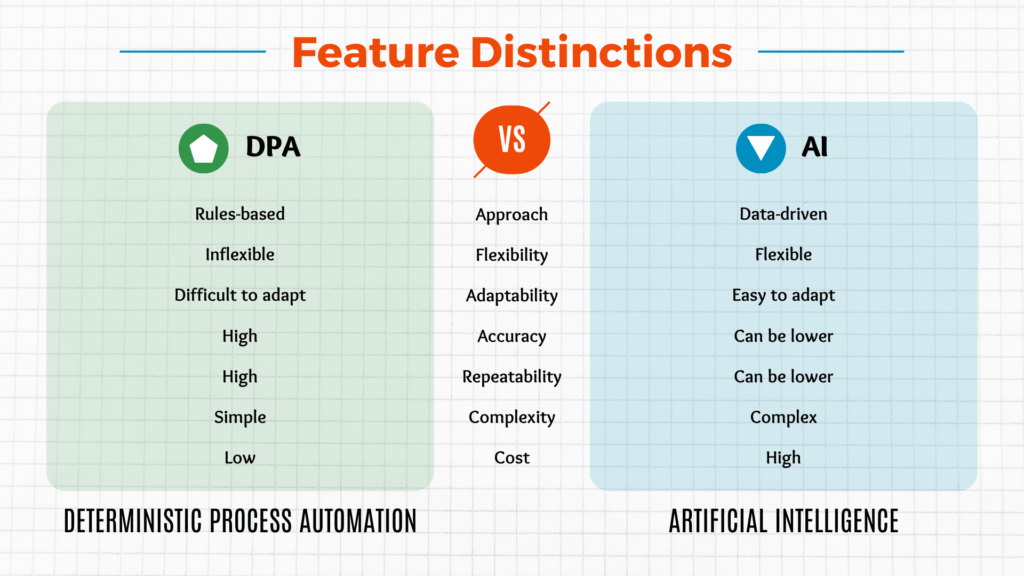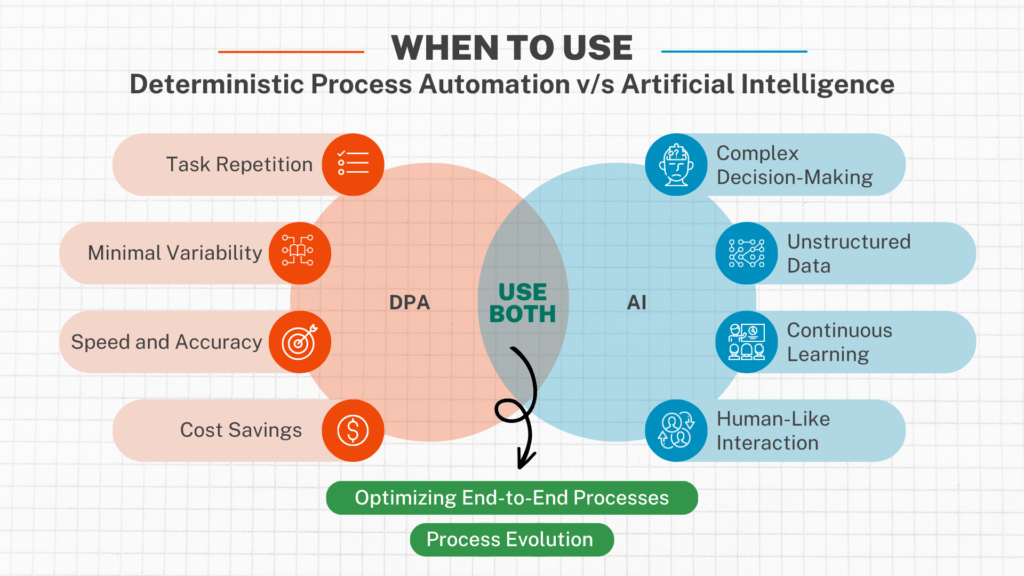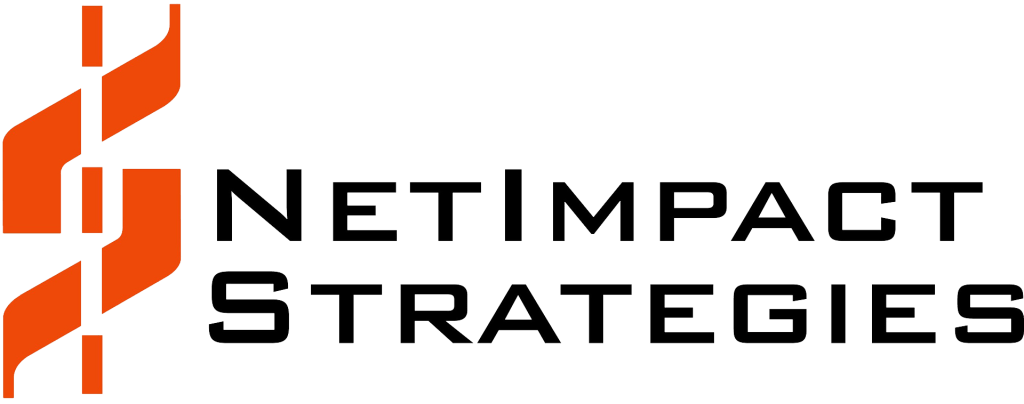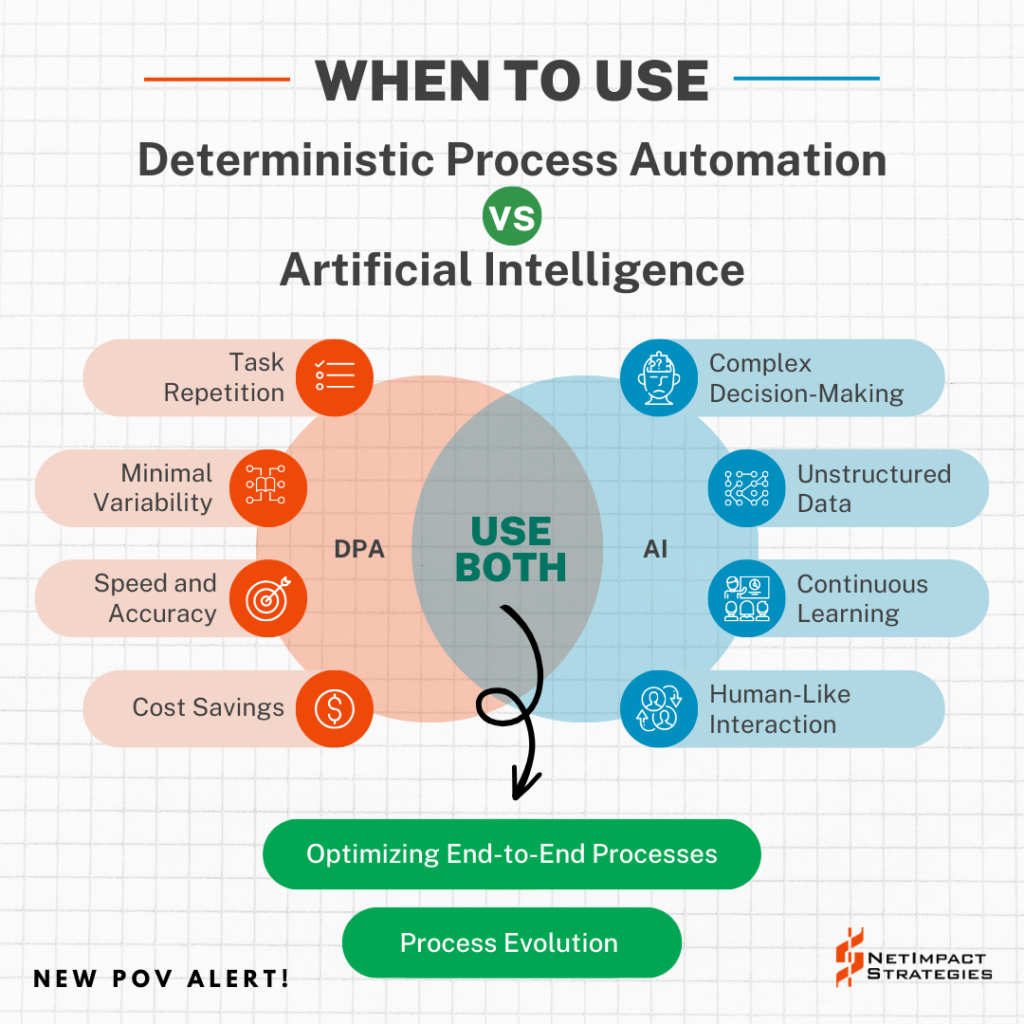The ever-increasing demand for efficiency, transparency, and outdated legacy systems have made it very clear that technological innovation is no longer a luxury but a necessity. The technology workforce is expected to double the growth of other industries, with some tech categories projected to expand up to five times1 (5x) the current rate by 2023. In an era where technology advancements are made in an unprecedented pace, it’s crucial for the Federal Government to stay ahead of the curve.
The role of the United States Federal Government continues to expand as a global driver of innovation, balancing efficiency and cost-effectiveness to keep the nation competitive. Automation and Artificial Intelligence (AI) continue to trend as buzzworthy terms tossed into tech dialogues.
| You may be familiar with DPA through the more popularized Robotic Process Automation (RPA). RPA uses software robots or bots to mimic human actions in interacting with software applications and systems. It focuses on automating repetitive, rule-based tasks by replicating the exact steps a human operator would take and is a subset of DPA technology. DPA is not limited to mimicking human actions and can involve more sophisticated decision-making and workflow management capabilities. |
Automation is the art of streamlining and simplifying daily tasks, liberating us from the shackles of monotony. With limited human capital to spare, we turn to automation in order to expand our capacity to “do more” and to choreograph these repetitive processes. Deterministic Process Automation (DPA) is a broader term encompassing a range of technologies that optimize and automate business processes and help orchestrate the intricacies between them.
Artificial Intelligence (AI) stands as the pinnacle of cognitive prowess. It doesn’t just simplify tasks; it transcends them. With AI, we enter a world where machines can think, learn, and adapt, breaking free from the mundane boundaries of human capabilities. While Deterministic Process Automation (DPA) focuses on process optimization, AI expands these horizons further, harnessing the power of machine learning, neural networks, and data analytics to not only automate but also to anticipate, reason, and innovate in ways that redefine what’s possible.
So, if DPA is a Swiss watch, then AI is an Apple Watch. The former is known for its accuracy and reliability because of the precise craftsmanship and technical optimization, while the latter is leveraged for capabilities way beyond timekeeping, including health insights we’ve never had or serving as a digital key to our cars and homes.
Deterministic Process Automation (DPA): Precision in Action
Deterministic means that the output of an algorithm is always the same given the same input. It is a Swiss watch because of its accuracy, predictability, and it is highly rule-based. Each gear and component has a specified role preset during its assembly, and the final product performs it well.
In the context of process automation, a DPA-powered bot will always perform the same task in the same way, every time. DPA is a rule-based approach to automation and can manage exception handling – which means it does not need to rely on human intervention for unexpected or complex situations.
| Key Features of DPA Rules-Based: DPA follows a set of predefined rules, ensuring consistency and accuracy. Predictable: Outcomes are predictable, as they adhere to established guidelines. High Efficiency: DPA excels in repetitive tasks, reducing manual effort. Auditability: Every action is traceable, enhancing transparency and compliance. |
Much like the intricate internal mechanisms of a Swiss watch, DPA operates by meticulously adhering to predefined rules and structured data.
DPA revolutionized government operations by taking over routine tasks on behalf of humans – because it is a machine and behaves the same way each time, it minimizes errors that humans may be prone to (e.g., inattention, accidents, etc.) and enhances overall efficiency because it frees up value human time and attention to perform more complex activities. However, it’s limited because it cannot adapt to conditions that were not defined right at the onset. DPA can prove inflexible when faced with environmental shifts – your Swiss watch may perform beautifully but will not automatically adjust to new time zones when you travel from Ireland to the US.
DPA also lacks the ability to learn from data or exhibit intelligent behaviors beyond what has been explicitly programmed. The prevalence of automation across industries – from industrial factories to corporate settings – is increasing. According to the U.S. Office of Personnel Management, almost one-half of government agencies’ workloads could be automated, and close to two-thirds of federal employees could see their workloads reduced by as much as 30%2. It is imperative that we focus not only on how humans and machines can best collaborate at work but also on how that collaboration can enable better work processes and create more value.
Artificial Intelligence (AI): Knowledge through Learning
Artificial Intelligence is the scholar of the automation world – its goal is to extend beyond predefined rules through continuous education. Its distinction is that it learns from the data it’s exposed to, adapts its behavior, and even makes predictions based on historic input. Different types of AI can understand natural language, recognize patterns, and even engage in complex decision-making because of its ability to consume massive amounts of data and processing speed.
| Karen Mills3, U.S. Small Business Administration (SBA) Administrator from 2009 to 2013, believed that with half the country employed by small businesses during pre-pandemic times, the spread of AI reliance from large businesses to small could have major implications for the national economy over the long haul. |
In its simplest form, AI combines computer science and robust datasets to enable problem-solving. Its sub-fields include machine learning and deep learning, which are disciplines of self-adjusting algorithms that will allow predictions or behaviors that were not explicitly programmed at onset based on inputs beyond the seeding dataset. For the Federal Government, AI offers the potential to revolutionize data analysis, cybersecurity, and decision support systems – ultimately, our relationship with technology and with data itself.
As per a Stanford University study, the U.S. Government spending on AI contracts was approximately $3.3 billion in the fiscal year 2022, nearly 2.5 times increase since 2017. This number will likely increase in the coming years as private technology ventures continue investing and pushing for machine learning development. Continued government spending on AI year-on-year has grown by over $600 million annually.
| AI Analysis is not Skin Deep: AI’s prowess in data analysis and decision-making is another aspect where it distinguishes itself from DPA. For instance, Because AI algorithms can analyze vast amounts of data quickly, it is being applied to medical data to aid in diagnosing diseases accurately. Research by Esteva et al. (2017) demonstrated how AI systems outperformed dermatologists in diagnosing skin cancer based on images. |
AI is already revolutionizing diverse fields, including healthcare diagnostics, fraud detection in finance, and self-driving cars in transportation. It’s an adaptive technology that learns from the growing data, making it invaluable for tasks involving ambiguity and complex decision-making.

DPA is a robust choice for situations where accuracy and repeatability are critical, while AI serves situations requiring flexibility and adaptability and where each computer response may need to be re-calculated based on the data presented. The fundamental differences between DPA and AI are:
Lack of Learning and Adaptation: AI possesses learning capabilities, adapting and improving over time through data analysis, while DPA lacks the ability to learn autonomously.
Absence of Decision-making Autonomy: Unlike DPA, AI systems make independent decisions without human intervention, relying on sophisticated algorithms for strategic choices.
Data Analysis and Pattern Recognition: AI excels in data analysis and pattern recognition, enabling accurate medical diagnoses, a capability absent in DPA’s rule-based approach.
Flexibility and Adaptability: AI’s adaptability allows it to handle dynamic situations, whereas DPA is limited to predefined tasks without the flexibility to learn and adapt.

| Did You Know? The many ways AI has been instrumental includes helping us tackle COVID-19. AI-based methods have been used to track COVID-19 spread over time and place and to conduct disease surveillance by scanning public spaces for people with potential COVID-19 infection. The sequence of SARS-CoV-2 was also identified with the help of AI. It helped promptly identify variants of concern (VOC) as delta strains and Omicron. The growth of AI techniques in health care opened a broad gate for discovering the genomic sequences of the COVID-19 virus and VOCs. AI also helps in the development of vaccines and drugs (including drug repurposing) to obtain potential preventive and therapeutic agents for controlling the COVID-19 pandemic. |
Leveraging DPA and AI for Maximum Benefit
DPA and AI are not competitors but allies with complementary purposes. DPA can handle routine, structured processes, while AI excels in data analysis, decision-making, and ambiguity handling. Together, they form a powerful toolkit for government agencies. Ultimately, the best automation to apply depends on the specific business needs.
So, how can the Federal Government make the most of Deterministic Process Automation and Artificial Intelligence?
| Certain agencies have already adopted guidelines and principles for the use of AI for national security or defense purposes, such as the Department of Defense’s Ethical Principles for Artificial Intelligence (February 24, 2020) and the Office of the Director of National Intelligence’s Principles of Artificial Intelligence Ethics for the Intelligence Community (July 23, 2020) and its Artificial Intelligence Ethics Framework for the Intelligence Community (July 23, 2020). These guidelines and principles ensure that the use of AI in those contexts will benefit the American people and be worthy of their trust. |
- Identify the Right Fit: Identify tasks suitable for automation. DPA can handle structured, rule-based tasks, while AI is ideal for data-driven, complex decision-making.
- Data is Key: For AI to thrive, quality data is paramount. Invest in data collection, cleansing, and storage to fuel AI’s learning capabilities.
- Security and Ethics: Maintain stringent security measures and ethical guidelines when implementing AI, especially for sensitive government data.
- Training and Reskilling: Invest in training and reskilling the workforce to adapt to new technologies, ensuring a smooth transition.
- Collaboration: Foster collaboration between agencies, sharing insights and best practices to harness the full potential of DPA and AI.
The Federal Government has already been taking advantage of these advancements, including:
- The General Services Administration’s4 (GSA’s) 30 RPA bots frees the acquisition workforce from repetitive, administrative tasks like invoicing and de-obligations.
- The Department of Defense5 (DoD) uses AI bots to automate the process of reviewing contracts – reducing the time it takes to review contracts by 75%.
- The Department of Homeland Security6 (DHS) has been using AI to screen travelers at airports – improving the efficiency of the screening process and reducing the risk of terrorism since 2021.
- The Internal Revenue Service7 (IRS) uses AI to identify fraudulent tax returns by helping identify patterns and trends and analyzing algorithms and compliance threats.
Conclusion
Facing funding limitations, policy considerations growing in complexity, and workforce recruitment and retention challenges, the Federal Government can leverage these advancements for profound impact. These technologies allow humans to exponentially improve their productivity and expand their capacities to tackle more complex and thoughtful mission needs – scaling our limited workforce to achieve more. Understanding the differences is not just a matter of semantics; it’s a strategic imperative that can lead agencies into an era of greater efficiency and better fiscal stewardship and improve the digital dexterity of our people. The future of government may be guided through a machine’s hands, but it’s up to humans to ensure it’s done right.



